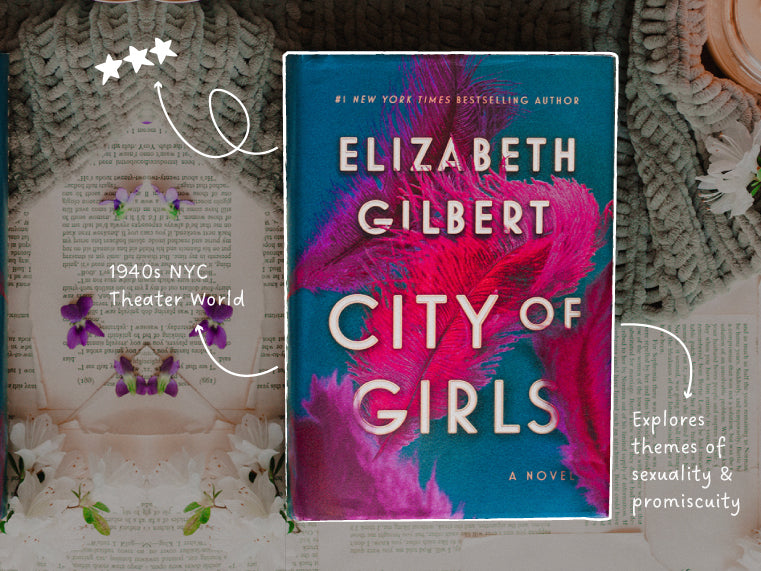In City of Girls, Elizabeth Gilbert takes us back to the year 1940, introducing us to Vivian Morris, a girl whom most judgmental minds would find easy to label an airhead and a tramp. Vivian starts out with very little direction in her life. At the age of 19 she’s been kicked out of college for slacking and her days at home are mostly limited to bouncing a tennis ball against the walls of her parents’ house. Thus, fearing she will be lost forever, they send her off to Manhattan to live with her Aunt Peg who runs a small local theater called the Lily Playhouse — and who is also considered a black sheep in the aristocratic Morris family.
When Vivian arrives at the Lily Playhouse, she’s thrown into a bohemian lifestyle. Without any parental supervision apart from that of her unconcerned aunt and new, spirited friends, Vivian, for the first time, feels the adrenaline rush of freedom and independence. It’s during this time that she experiences her first sexual awakening. However, her search for quick thrills eventually run her into deep trouble. Trouble like the merciless societal norms deemed unforgivable during the ‘40s. Her reputation — her whole life — is now at stake, and so Vivian must bow out of her New York City debauchery with her head hung low and her tail between her legs, back to her parents’ home.
City of Girls starts off as a story of shame but it takes us through what is really a story of redemption. It is the anti-Anna Karenina of novels; the anti-Madame Bovary. With City of GIrls, Gilbert challenges that idea implemented by Leo Tolstoy and Gustave Flaubert (among others) in their respective novels, so many years ago, that an unfaithful woman, a woman committing lewd acts, or acts outside of what was acceptable for the times, must suffer and pay for her sins. In both Tolstoy’s and Flaubert’s novels, their reckless heroines pay the price with their lives. In her newest novel, Gilbert offers her heroine the less-explored option to redeem herself. But it’s not a redemption to appease those who shamed and pointed fingers at her but a redemption whereby she learns to accept her mistakes and love herself.
“At some point in a woman’s life, she just gets tired of being ashamed all the time. After that, she is free to become whoever she truly is.”― Elizabeth Gilbert, City of Girls
The story is told by Vivian many years later as an elderly woman. She’s had enough time to reflect on her past and the injustices of the world. She’s had ample time, experience and insight now to see how women are more severely punished for mistakes men have made right alongside them. So she learns the hard way — the way most women end up learning this lesson — that the world is an unfair place. But more importantly, she learns that her worth is what she makes it and not what society at any point in history dictates.
City of Girls is a reflection of the times then and the times now. It forces us to see the bigger picture. It forces us to see the disparity between society’s treatment of women versus that of men — the greater standards that women are held up to, the stronger punishments that they are subjected to. It also reminds us, at the end of the day, that no one is responsible for dictating our worth except for ourselves.

Interested in snagging this story for yourself? We've currently got two copies of this book in the shop!

